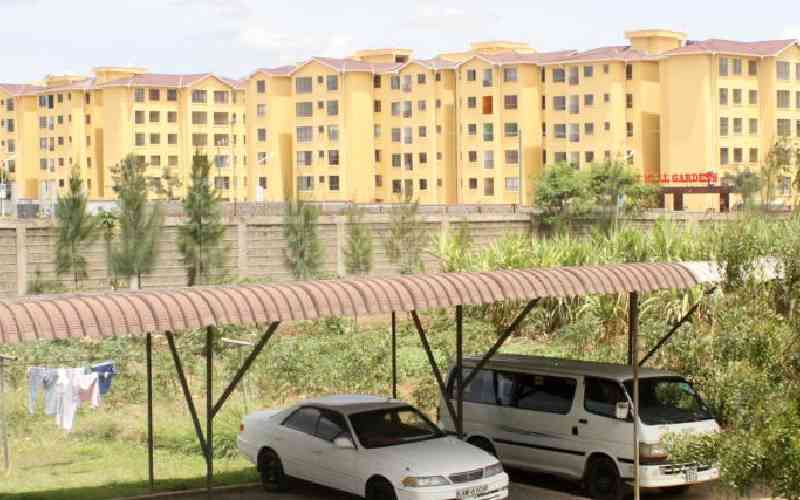
High cost of housing units and limited access to affordable long-term finance are the leading hindrances to mortgage market growth in Kenya, according to a recent Central Bank survey.
In a country with more than 46 million people, there were only 26,187 mortgage loans as of December 2017, up from 24,059 as of December 2016.
More worrying was that the number of institutions offering mortgages dropped from 35 in 2016 to 31 in 2017. Two of the banks were acquired while the other two just stopped offering mortgages.
This is not a good trend and an urgent intervention is needed to change the narrative. That is why the government’s plan to provide 500,000 affordable units under the Big Four Agenda is welcome.
The move will not only lead to increased mortgage uptake, but also bring about social impact by contributing to the Sustainable Development Goals through sustainable human settlements.
But how did we get here? The biggest reason is high property prices and developers’ obsession with the high-end market segment. In Nairobi, for instance, developers have mostly concentrated on high-end areas like Lavington, Kilimani and Westlands, to the exclusion of the affordable segment.
Demand and supply
In mortgage financing, we are guided by demand and supply. Over the years, however, it has become clear that the supply side of the equation is where the challenge lies, primarily because there have often not been enough units, or the ones available were far too expensive.
Conservative government estimates indicate that Kenya is dealing with a backlog of two million housing units, with the deficit growing by 150,000 units every year due to several factors, including the limited availability of mortgage finance and developer finance.
As a bank, our mortgage offering is based on a customer qualifying for certain limits, but the challenge has always been that while most customers across the industry qualify for houses costing under Sh5 million, there are no such houses available. These would be ideal for the average working Kenyans paying rent of up to Sh30,000 per month.
The industry has grappled with this dilemma for years and the government’s focus on affordable housing therefore presents a much-needed breakthrough, with the winds now shifting downwards to the untapped bottom of the pyramid.
Through the Kenya Mortgage Refinance Company (KMRC), an initiative of the National Treasury and World Bank, the government will support the affordable housing agenda by providing secure, long-term funding to mortgage lenders, thereby increasing the availability and affordability of mortgage loans to Kenyans.
KMRC will boost demand whereas on the supply side, we have the government through the Ministry of Housing, the National Housing Corporation and the private sector developers who will put up the houses. As financial institutions, we are plugging into the demand side to provide long-term mortgages to Kenyans who qualify to buy these houses.
Interest capping
Stay informed. Subscribe to our newsletter
Since the introduction of interest rate cap in September 2016, there has been an increased demand for mortgage loans due to perceived affordability. Under KMRC, mortgage loans will be priced at below 10 per cent, down from the current averages of 13 per cent. This is expected to drive demand to unprecedented levels.
Currently, the main funding source for banks is customer deposits, which are short-term in nature, restricting banks’ capacity to lend long-term. KMRC is going to remove this liquidity mismatch by providing long-term funding at attractive rates while ensuring sound lending habits, resulting in greater availability of fixed rate mortgages and longer available loan terms.
- The writer is the head of mortgage at Barclays.
[email protected]
 The Standard Group Plc is a
multi-media organization with investments in media platforms spanning newspaper
print operations, television, radio broadcasting, digital and online services. The
Standard Group is recognized as a leading multi-media house in Kenya with a key
influence in matters of national and international interest.
The Standard Group Plc is a
multi-media organization with investments in media platforms spanning newspaper
print operations, television, radio broadcasting, digital and online services. The
Standard Group is recognized as a leading multi-media house in Kenya with a key
influence in matters of national and international interest.
 The Standard Group Plc is a
multi-media organization with investments in media platforms spanning newspaper
print operations, television, radio broadcasting, digital and online services. The
Standard Group is recognized as a leading multi-media house in Kenya with a key
influence in matters of national and international interest.
The Standard Group Plc is a
multi-media organization with investments in media platforms spanning newspaper
print operations, television, radio broadcasting, digital and online services. The
Standard Group is recognized as a leading multi-media house in Kenya with a key
influence in matters of national and international interest.









